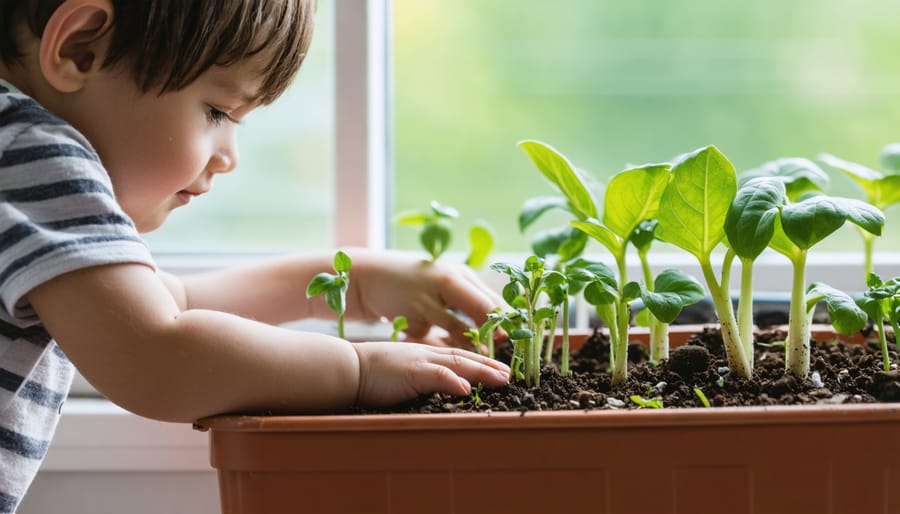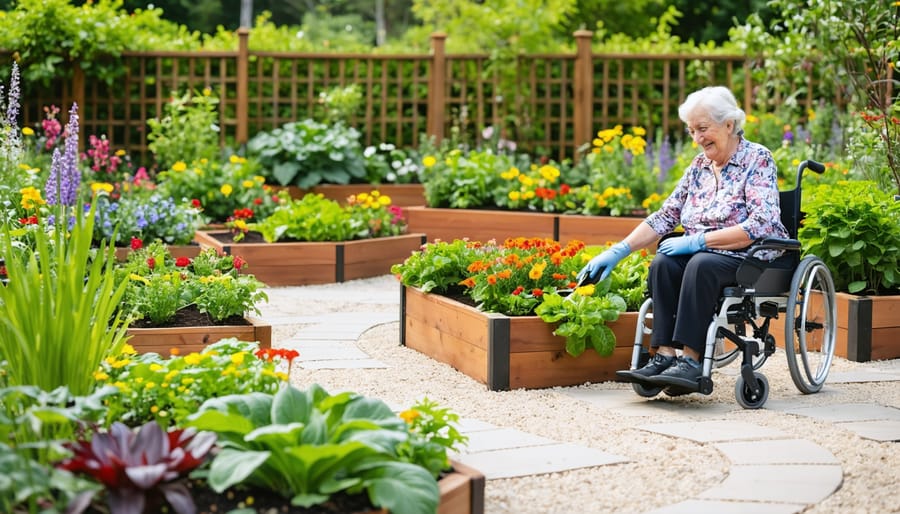Horticultural education transforms lives, bridging cultural gaps and nurturing both plants and people across global communities. From small-scale community gardens to international university exchange programs, this vital field empowers individuals to cultivate sustainable practices while fostering cross-cultural understanding. Modern horticultural education blends traditional wisdom with cutting-edge techniques, creating dynamic learning environments where students master everything from soil science to cultural plant significance.
The impact extends far beyond garden beds and greenhouses. Students in horticultural programs develop critical problem-solving skills, environmental awareness, and deep appreciation for diverse agricultural traditions. These programs serve as catalysts for sustainable development, food security initiatives, and environmental conservation efforts worldwide. Whether in formal academic settings or community-based programs, participants gain hands-on experience while building lasting international connections.
As climate change and food security challenges intensify, horticultural education plays an increasingly crucial role in preparing the next generation of global garden stewards. By combining practical skills with cultural exchange, these programs create ripple effects that benefit both local communities and our shared global ecosystem. The growing network of international horticultural initiatives offers unprecedented opportunities for learning, collaboration, and positive environmental impact.
The Power of Cross-Cultural Garden Education

Traditional Growing Methods Meet Modern Techniques
The beauty of modern horticultural education lies in its ability to blend time-tested growing methods with contemporary innovations. Traditional techniques, passed down through generations, often hold wisdom that complements today’s scientific understanding. For instance, the ancient Three Sisters planting method from Native American cultures teaches valuable lessons about companion planting and sustainable agriculture, while modern soil testing equipment helps students understand the scientific principles behind why these combinations work so well.
Students benefit immensely from hands-on experience with both approaches. They might learn traditional seed-saving techniques alongside hydroponic systems, or study historical pest management methods while exploring integrated pest management software. This dual approach helps develop a deeper appreciation for agricultural heritage while building practical skills for modern farming challenges.
Many programs now incorporate cultural exchange elements, where students learn different growing techniques from various global traditions. Japanese permaculture principles, Mediterranean dry-farming techniques, and African water conservation methods all offer unique perspectives that enrich the learning experience and prepare students for diverse growing conditions.
By embracing both old and new methods, learners develop a more comprehensive understanding of horticulture and its evolution through time.
Language of the Garden
Gardening has a remarkable way of bringing people together, even when they don’t share a common spoken language. In community gardens worldwide, experienced gardeners can demonstrate proper planting techniques, soil preparation, and plant care through simple gestures and demonstrations that transcend verbal communication. The universal language of gardening includes the shared understanding of a seedling’s fragility, the joy of harvest, and the satisfaction of nurturing growth.
This visual and experiential nature of gardening makes it an ideal platform for cultural exchange and learning. Whether it’s showing how deep to plant a seed with a simple hand gesture, demonstrating proper pruning techniques, or sharing excitement over a flourishing plant, these interactions create meaningful connections. Many community gardens have found that participants from different cultural backgrounds naturally develop their own system of communication through gardening activities.
The garden becomes a living classroom where actions speak louder than words, and understanding grows alongside the plants. This natural breaking down of language barriers has made horticultural education programs particularly successful in multicultural communities and international exchange initiatives.
Successful Garden Exchange Programs Worldwide
Community Gardens as Learning Centers
Community gardens have evolved far beyond simple plots of shared land, becoming vibrant educational hubs where knowledge and cultural traditions flourish. When building a community garden, participants create more than just growing spaces – they establish living classrooms where gardeners of all backgrounds can share their expertise and learn from one another.
These green spaces serve as perfect settings for informal learning experiences, where seasoned gardeners naturally mentor newcomers in traditional growing techniques, seed saving, and sustainable practices. Visitors might discover how to grow unfamiliar vegetables from their neighbors or learn about medicinal herbs used in different cultures.
The educational value extends beyond gardening skills. Community gardens foster cross-cultural understanding through shared activities like harvest festivals, cooking demonstrations, and seed exchanges. Children benefit particularly from these spaces, gaining hands-on experience with nature while learning about nutrition, environmental stewardship, and cultural diversity.
Many community gardens now partner with local schools and organizations to offer structured workshops and programs. These might include composting classes, seasonal planting guides, or cultural cooking sessions using garden-fresh ingredients. The beauty of these learning centers lies in their accessibility – anyone can participate, regardless of their gardening experience or cultural background.
Through this collaborative approach to learning, community gardens help preserve traditional growing methods while embracing innovative sustainable practices, creating spaces where knowledge flows freely across generations and cultures.
School Garden Partnership Programs
School garden partnerships have blossomed into powerful international initiatives, connecting students across continents through shared educational gardening activities. Programs like the Global School Gardens Network and Gardens for Growing Together have successfully linked schools from countries as diverse as the United Kingdom, Japan, Kenya, and Australia, creating vibrant learning communities.
These partnerships offer students unique opportunities to exchange growing techniques, native plant knowledge, and cultural traditions around food and agriculture. For instance, students in California have learned about drought-resistant farming methods from their peers in Australia, while sharing their own expertise in composting and organic pest control.
The educational impact of these programs extends far beyond horticulture. Students develop critical skills in cross-cultural communication, environmental awareness, and global citizenship. They learn to appreciate different approaches to gardening while understanding how climate and local conditions influence growing practices around the world.
Many schools report improved student engagement in science and mathematics when lessons are integrated with garden activities. The hands-on nature of these partnerships makes abstract concepts tangible and relevant. Students particularly enjoy sharing their harvest stories and seasonal celebrations with their international garden buddies through video calls and photo exchanges.
To join or start a school garden partnership, educators can connect through organizations like the International School Gardens Network or reach out to their local botanical gardens for guidance and potential connections.

Starting Your Own Cultural Garden Exchange
Building Cultural Partnerships
Building meaningful connections with international gardening communities can enrich your horticultural knowledge and create lasting cultural exchanges. Whether you’re looking to start a community garden with global influence or simply learn from gardeners worldwide, cultural partnerships offer incredible opportunities for growth.
Begin by reaching out to established gardening organizations in different countries through social media platforms or international gardening forums. Many communities are eager to share their traditional growing methods, native plant knowledge, and sustainable practices. Consider organizing virtual garden tours, where participants can showcase their gardens and discuss regional growing techniques.
Exchange programs can take many forms, from seed-sharing initiatives to collaborative research projects. Partner with botanical gardens that maintain international relationships, as they often facilitate cultural exchange programs and educational workshops. These partnerships can lead to hands-on learning experiences, such as visiting gardens in other countries or hosting international gardening experts in your community.
Document and share your experiences through blogs, photos, and videos to maintain connections and inspire others. Remember that successful cultural partnerships are built on mutual respect, open communication, and a genuine interest in learning from one another’s horticultural traditions. Start small, perhaps with a single partnership, and let these relationships grow naturally, just like the gardens you tend together.
Creating Inclusive Learning Spaces
Creating inclusive learning spaces in horticultural education requires thoughtful consideration of diverse cultural practices and traditions. Start by incorporating raised beds at various heights to accommodate gardeners of different abilities and age groups. Wide pathways between garden beds ensure wheelchair accessibility and comfortable movement for all participants.
Consider designating specific areas for cultural garden demonstrations where students can share traditional growing methods from their heritage. For example, you might include space for Three Sisters gardening (corn, beans, and squash) from Native American traditions, or vertical growing techniques popular in Asian cultures.
Include multilingual signage and plant labels to make the space welcoming for non-native English speakers. When selecting plants, incorporate varieties that represent different cultural cuisines and medicinal traditions. This might mean growing bitter melons alongside familiar vegetables like tomatoes and peppers.
Create gathering spaces with seating arrangements that encourage group learning and cultural exchange. Consider installing shade structures that can accommodate various teaching styles, from formal lectures to hands-on demonstrations. These areas can double as spaces for cultural celebrations and harvest festivals.
Remember to provide adaptive gardening tools and establish universal design principles throughout the space. Simple additions like tool storage at different heights and water sources placed at regular intervals make the garden accessible to everyone while fostering a sense of community and belonging.

Measuring Success and Growth
Measuring the success of horticultural education programs involves both quantitative and qualitative approaches that help ensure continuous improvement and sustainable growth. Program coordinators typically track participation rates, completion rates, and the number of successful garden projects initiated by students. However, the true impact often extends beyond these numbers.
Regular feedback surveys help gauge how well participants are learning and applying their knowledge. These assessments might include questions about confidence levels in specific gardening techniques, understanding of sustainable practices, and ability to identify common plants and problems. Photo documentation of gardens before and after the educational program can provide visual evidence of progress and success.
Student portfolios, containing journal entries, garden plans, and progress photos, offer valuable insights into individual growth and learning. These personal records help demonstrate how participants cultivate joy and well-being through their horticultural journey.
Community impact measurements are equally important. This might include tracking the number of community gardens established, pounds of produce donated to local food banks, or the number of new gardening workshops led by program graduates. Environmental impact can be assessed through metrics like water conservation practices adopted, reduction in chemical fertilizer use, and increased biodiversity in garden spaces.
Long-term success indicators often emerge through alumni surveys, which reveal how participants continue to use their knowledge, share their skills with others, and contribute to their local gardening communities. These various measurement tools help programs adapt and evolve while ensuring they remain relevant and effective for future generations of gardening enthusiasts.
Horticultural education serves as a powerful bridge between cultures, fostering understanding and connection through shared experiences in the garden. As we’ve explored, these programs not only teach valuable gardening skills but also create lasting relationships and promote environmental stewardship across borders. Whether you’re interested in teaching, learning, or simply sharing your garden knowledge, there are countless opportunities to get involved in cultural exchange through horticulture.
Consider joining a local community garden, participating in international gardening forums, or even hosting visiting gardeners from other countries. Every seed planted and every technique shared contributes to a growing global network of garden enthusiasts. By embracing horticultural education, we not only grow better gardens but also cultivate a more connected and sustainable world. Start your journey today – the garden is waiting to teach us all.




